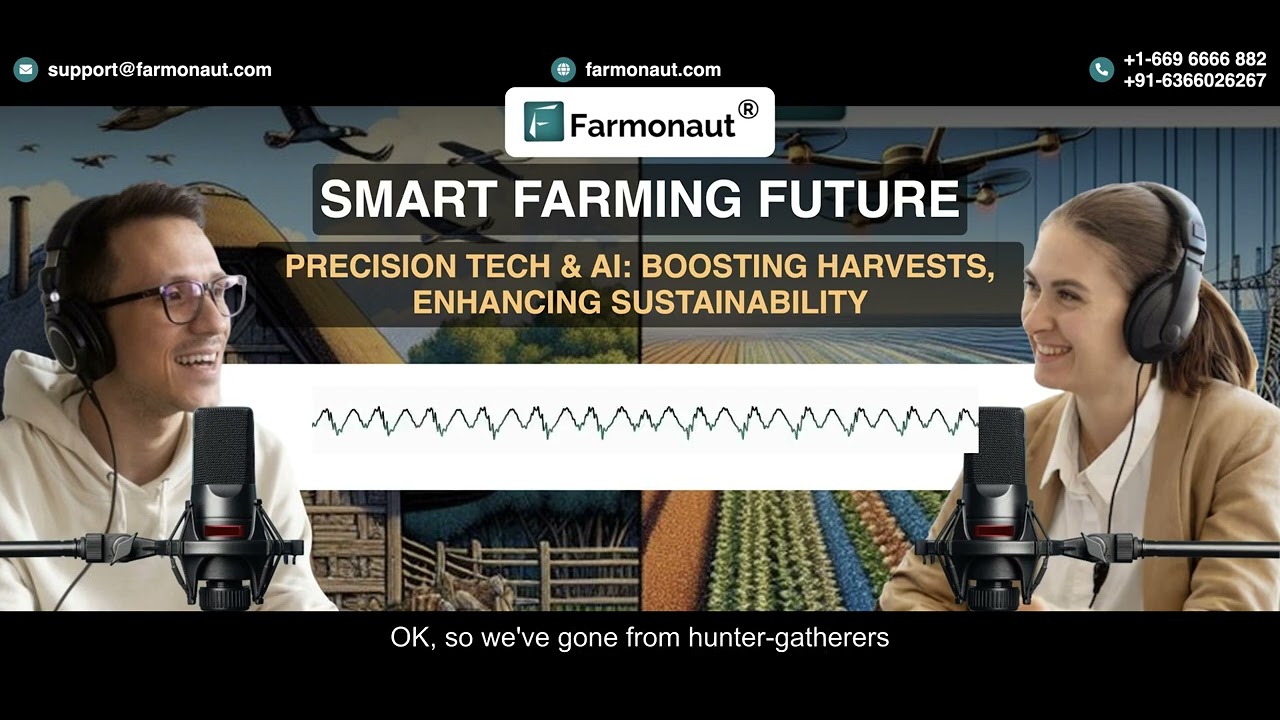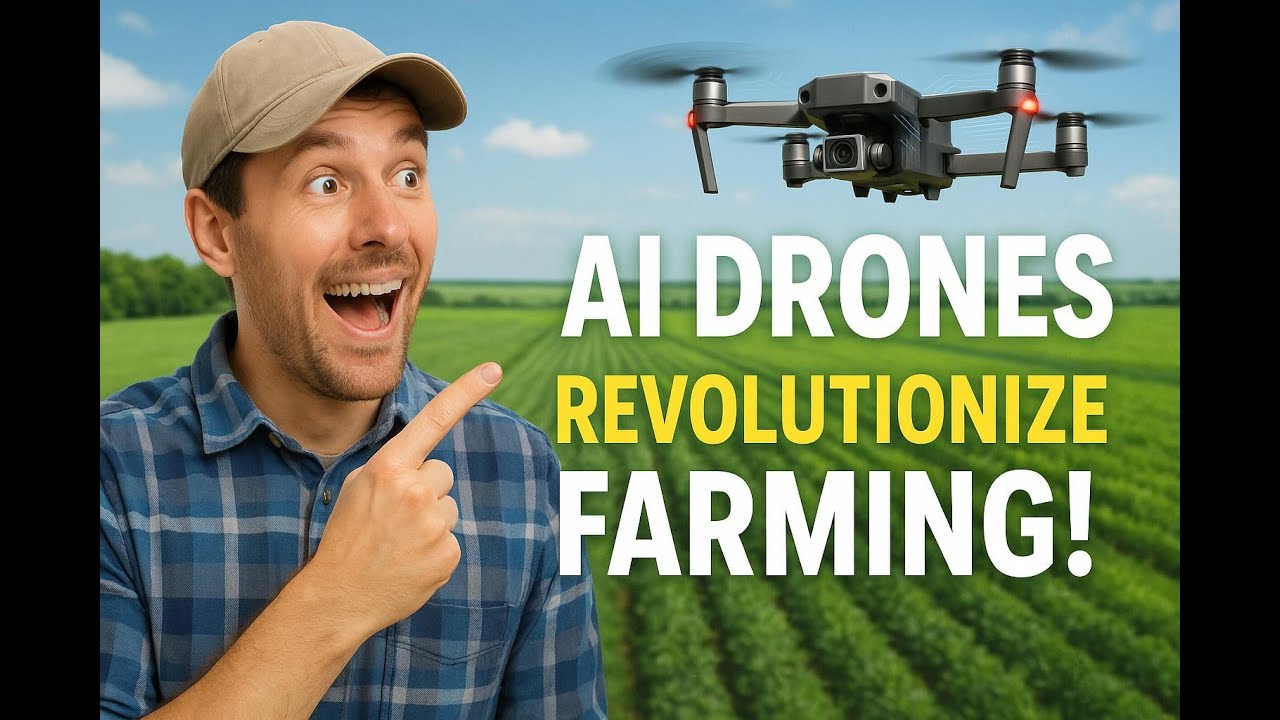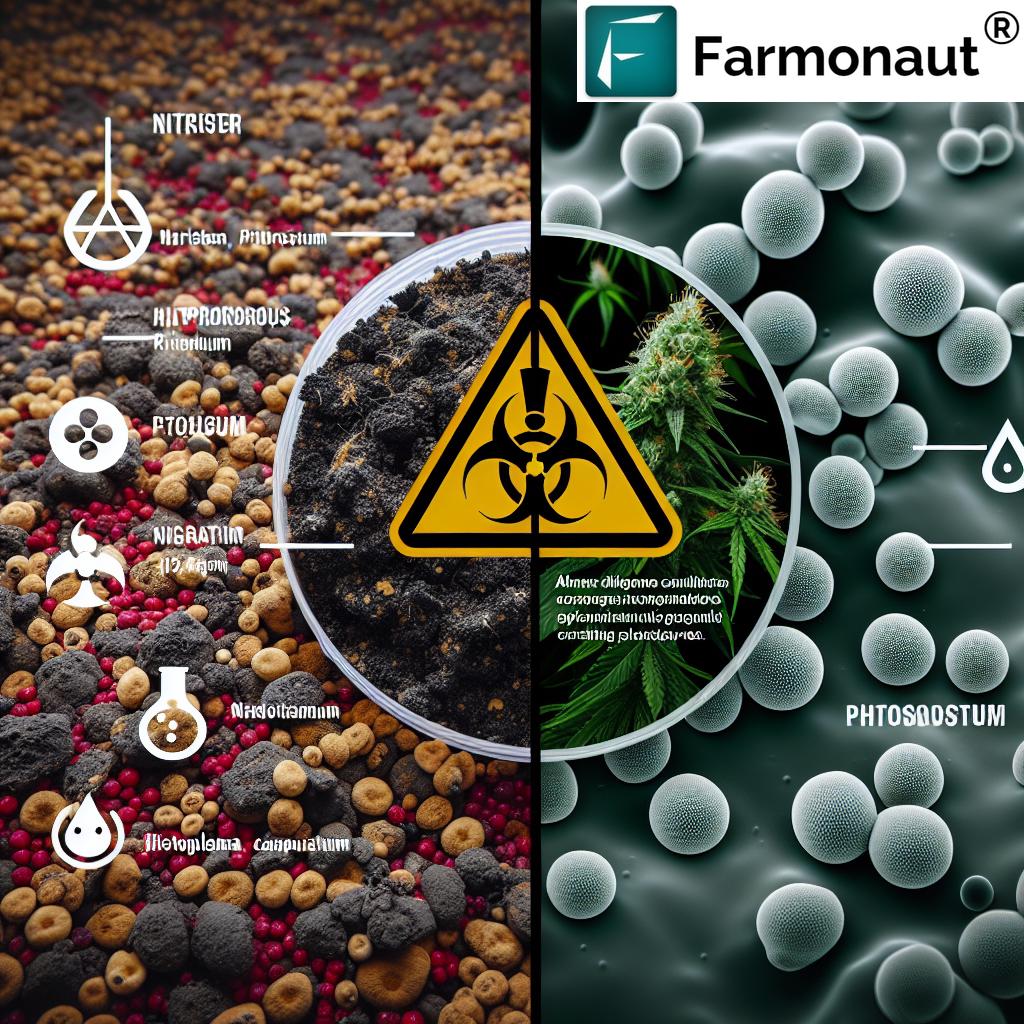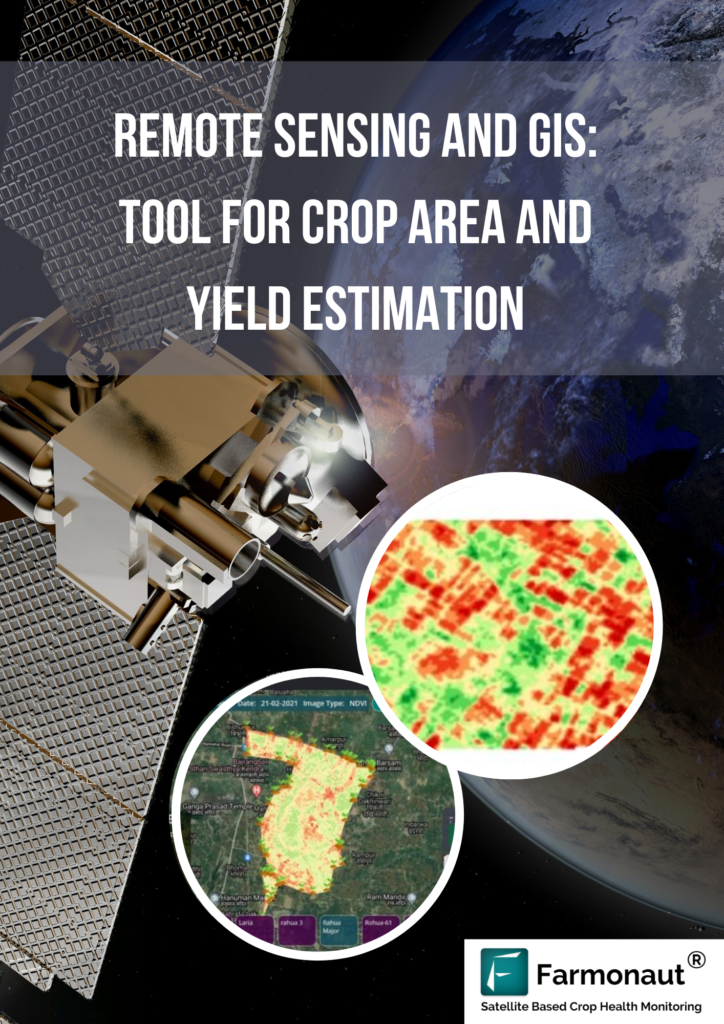Nitrogen Fertilizer for Grass: 7 Powerful Eco Solutions 2026
Summary: Nitrogen Fertilizer for Grass: Enhancing Growth with Sustainable Solutions in 2025—Nitrogen is a critical nutrient for healthy grass growth. Discover innovative nitrogen fertilizer for grass options including natural, liquid, and homemade solutions that boost growth, sustainability, and soil health in 2025 and beyond, shaping the future of agriculture, forestry, and turf management.
“Natural nitrogen solutions may reduce grass fertilizer emissions by over 30% by 2026, supporting greener lawns worldwide.”
Table of Contents
- Why Is Nitrogen Fertilizer for Grass So Important?
- Types of Nitrogen Fertilizers for Grass in 2026
- 7 Powerful Eco Solutions: Nitrogen Fertilizer for Grass
- Comparative Table: Eco-Friendly Nitrogen Fertilizer Solutions 2026
- Best Practices for Sustainable Fertilization and Nitrogen Management
- Integrating Technology, Precision & Sustainability: The Farmonaut Perspective
- Future Trends: Nitrogen Fertilizer for Grass & Environmental Protection in 2026
- FAQs: Nitrogen Fertilizer for Grass – Your Questions Answered
- Farmonaut Subscriptions
Welcome to the ultimate guide on nitrogen fertilizer for grass in 2026—where environmental sustainability, modern technology, and soil vitality go hand in hand for healthy, resilient, and sustainable grasslands worldwide. Nitrogen—forming essential amino acids, proteins, chlorophyll, and enzymes—remains one of the most indispensable nutrients for agriculture, turf, and forestry. Yet, with increasing environmental challenges and regulatory shifts, how we fertilize our grass with nitrogen is rapidly evolving, especially as we focus on natural, liquid, and homemade solutions for 2025, 2026, and beyond.
Why Is Nitrogen Fertilizer for Grass So Important?
Nitrogen fertilizer for grass is central to plant vitality, facilitating rapid growth, lush color, and resilience against stress and recovery from grazing or mowing. But why is nitrogen so indispensable in agriculture, forestry, and turf management?
- Critical Forms: Nitrogen forms amino acids, proteins, chlorophyll, and enzymes, fueling photosynthesis and cellular metabolism.
- Essential for Productivity: Whether for livestock pastures, sports turf, or grassland undergrowth, a steady nitrogen supply maintains lush green coloration, vigor, and effective recovery.
- Nutrient Deficiency Effects: Without sufficient nitrogen, grass exhibits pale, slow growth, and poor recovery after stress.
- Direct Influence: Balanced fertilization directly influences pasture productivity, ecosystem stability, and the efficiency of grassland management.
- Role in Sustainable Systems: Ensures long-term soil health, biological diversity, and responsible resource use.
We must recognize that not all nitrogen-based fertilizer is equal: the source, timing, and method of application can have profound impacts on operational efficiency, environmental sustainability, and broader ecosystem health.
Types of Nitrogen Fertilizers for Grass in 2026
Let’s explore the main types of nitrogen fertilizer for grass in modern agriculture, forestry, and turf management—including the shift to more sustainable, eco-friendly, and precision-oriented solutions.
-
Synthetic Nitrogen Fertilizers
- These include classic chemical fertilizers such as urea, ammonium nitrate, and ammonium sulfate, prized for their high nitrogen content and immediate efficacy.
- Synthetic types remain important for their quick results but are under closer scrutiny due to environmental concerns—such as nitrogen leaching, greenhouse gas emissions, and soil acidification.
- While still utilized, many farmers and managers are optimizing their use or seeking alternatives for the 2026 landscape.
-
Natural Nitrogen Fertilizers
- Increasingly popular in 2025 and 2026 as farmers, foresters, and turf professionals seek regenerative, sustainable systems.
- These natural sources include composted manure, legume-based cover crops, and biofertilizers containing nitrogen-fixing bacteria such as Rhizobium and Azotobacter.
- They release nitrogen more slowly, improving soil health and minimizing environmental impact.
-
Liquid Nitrogen Fertilizers
- Liquid options—such as urea-ammonium nitrate (UAN) solutions—offer rapid uptake and ease of application.
- Perfect for precision approaches, these can be applied through foliar sprays or fertigation systems, with variable rates based on real-time monitoring.
- This flexibility is helping managers reduce wastage, avoid runoff, and optimize productivity.
-
Homemade Nitrogen Fertilizers
- Farmers and eco-conscious turf managers are increasingly turning to homemade solutions in support of sustainability and circular production.
- Common recipes include compost teas, manure extracts, and plant-rich ferments (using materials like comfrey or nettle) to supply nitrogen, boosting microbial action and soil vitality in a natural, low-cost way.
Our understanding of nitrogen fertilizer for grass has evolved rapidly, and in 2026, environmental protection and sustainable growth are central to fertilizer choice and application. As regenerative agriculture and precision-based management practices rise in popularity, we see major advances not only in what types of nitrogen fertilizer are used but also in how, when, and why they’re applied.
7 Powerful Eco Solutions: Nitrogen Fertilizer for Grass in 2026
Let’s dive into the seven most impactful, eco-friendly nitrogen fertilizer for grass solutions for the years ahead. Each of these solutions leverages scientific insights and field-tested practices for superior soil health, growth, and sustainability.
- 1. Composted Manure (Natural)
- 2. Legume-based Cover Crops (Natural)
- 3. Biofertilizers with Nitrogen-Fixing Bacteria (Natural)
- 4. Urea-Ammonium Nitrate (UAN) Liquid Fertilizer (Liquid)
- 5. Slow-Release Synthetic Granular Fertilizers (Synthetic, Eco-Optimized)
- 6. Homemade Nitrogen Compost Tea (Homemade)
- 7. Plant-Based Liquid Ferments (Nettle/Comfrey Tea) (Homemade Liquid)
1. Composted Manure: A Natural Nitrogen Powerhouse
Composted manure is a classic organic nitrogen source and remains at the forefront of sustainable fertilization in 2026. Properly composted manure releases nitrogen slowly, minimizing leaching and boosting microbial activity. It’s widely available for farmers and homeowners alike, inexpensive, and returns a breadth of secondary micronutrients to the soil.
- How It’s Used: Broadcast or rake into the top layer of grassland or turf, ideally in early spring or after mowing.
- Pros: Encourages soil biodiversity, increases organic matter, and helps balance soil moisture.
- Cons: Nutrient content may be variable—testing is advised for precision.
2. Legume-Based Cover Crops: Living Nitrogen Fixers
Planting legumes such as clover, vetch, or peas integrates natural nitrogen fixation into crop or turf rotation. Rhizobium bacteria residing in legume roots convert atmospheric nitrogen into a plant-available form, enhancing the nitrogen content of the soil for subsequent grasses.
- How It’s Used: Interseed with your grass or after grass harvest, plowing down before full bloom for optimal nitrogen release.
- Pros: Supports soil structure, reduces erosion, and offers habitat for beneficial insects.
- Cons: Requires planning and time for establishment—less immediate than synthetic options.
3. Biofertilizers with Nitrogen-Fixing Bacteria: Microbial Allies
Biofertilizers containing Rhizobium or Azotobacter bacteria replace or supplement chemical fertilizers by supplying living microorganisms that convert atmospheric nitrogen into plant-available forms.
- How It’s Used: Applied directly to seeds, soil, or roots—often in conjunction with minimal synthetic input.
- Pros: Reduces chemical needs, enhances soil life and overall ecosystem resilience.
- Cons: Best results in healthy, aerated soils with organic matter content above 2%.
4. Urea-Ammonium Nitrate (UAN) Liquid Fertilizer: Next-Gen Efficiency
Liquid nitrogen fertilizer—especially UAN solutions—offer quick, targeted nitrogen delivery through foliar application or via irrigation (fertigation). UAN rapidly corrects deficiencies and fits perfectly with precision agriculture, turf, and forestry management in 2026.
- How It’s Used: Sprayed onto foliage or applied alongside irrigation cycles for immediate effect.
- Pros: Enables precision dosing, minimal waste, and integration with modern satellite and AI tech for real-time monitoring.
- Cons: Overuse may increase leaching risk if not employed with smart monitoring tools.
5. Slow-Release Synthetic Granular Fertilizer: Controlled Availability
While still synthetic, modern eco-optimized, slow-release granules allow for a controlled release of nitrogen, minimizing runoff and maximizing nutrient uptake. These advancements in fertilizer formulation address prior concerns about leaching and greenhouse gas emissions.
- How It’s Used: Broadly spread once or twice a year over grass, turf, or pasture.
- Pros: Less frequent application needed, predictable nutrient availability, and low risk of root burn.
- Cons: Slightly higher cost per application, but mitigated by less frequent usage and environmental savings.
6. Homemade Nitrogen Compost Tea: DIY for Soil Health
A simple, highly effective homemade nitrogen fertilizer solution involves brewing compost tea: steeping well-rotted compost in water (at a 1:4 or 1:6 compost-to-water ratio) for 1–3 days. The resulting “tea” is brimming with water-soluble nutrients, including plant-available nitrogen, and teems with beneficial microbes.
- How It’s Used: Water grass and turf with diluted tea either directly or via a sprayer after straining.
- Pros: Promotes biological activity and soil structure, easily made at home for virtually no cost.
- Cons: Nutrient levels can vary—ideal for supplementary rather than main fertilization.
7. Plant-Based Liquid Ferments (Nettle/Comfrey Tea): The Ultimate Homemade Solution
These homemade liquid nitrogen fertilizers leverage fast-growing, leafy plants such as nettles or comfrey. By steeping fresh-cut leaves in water for several weeks, gardeners and managers produce a highly potent nitrogen-rich solution.
- How It’s Used: Dilute concentrated ferment (typically 1:10 or 1:20) and apply around grass roots or across turf for an organic nitrogen boost.
- Pros: Highest nitrogen among homemade liquefied options—brilliant for eco-conscious management.
- Cons: Strong odor requires consideration during steeping and application.
“Homemade eco-fertilizers can cut synthetic nitrogen use for lawns by up to 40%, boosting soil health and biodiversity.”
Comparative Table: Eco-Friendly Nitrogen Fertilizer Solutions 2026
| Solution Name | Source Type | Estimated Nitrogen Content (%) | App. Frequency (per year) | Environmental Impact | Effect on Soil Health | 2026 Cost Estimate (USD) | Availability |
|---|---|---|---|---|---|---|---|
| Composted Manure | Natural | 1–3% | 1–2 | Low | Positive | $3–$6 | Home/Commercial |
| Legume Cover Crops | Natural | 2–5% (after incorporation) | 1 | Low | Positive | $6–$15 | Commercial |
| Biofertilizers (Rhizobium/Azotobacter) | Natural | 1–2% | 1–2 | Low | Positive | $8–$20 | Home/Commercial |
| UAN Liquid Fertilizer | Liquid | 28–32% | 2–4 | Moderate | Neutral/Positive* | $10–$18 | Commercial |
| Slow-Release Granular Fertilizer | Synthetic | 30–45% | 1–2 | Moderate/Low* | Neutral/Positive* | $14–$28 | Home/Commercial |
| Homemade Compost Tea | Homemade | ~0.5% | 4–10 | Low | Positive | $0–$1 | Home |
| Plant-Based Liquid Ferments | Homemade Liquid | ~1.2% | 2–8 | Low | Positive | $0–$1 | Home |
*Effective liquid and slow-release products improve outcomes when used with precision technologies or integrated management systems.
Best Practices for Sustainable Fertilization and Nitrogen Management
As we transition into 2026, making smart decisions about application—not just the fertilizer type—is central to eco-friendly, productive grass management. Here’s how to maximize the benefits while minimizing risks:
1. Soil Testing and Nutrient Balancing
- Test soil at least once every 1–2 years to determine baseline nitrogen and other nutrient levels.
- Create a customized fertilization plan based on specific species, climate, and management goals.
- Adjust inputs to avoid over-application, excess cost, and pollution.
2. Precision Application—Integrating Satellite and AI
- Use satellite data and AI advisories—like those offered via the Farmonaut platform—to monitor vegetation health (NDVI), soil moisture, and nutrient status in real time.
- Fine-tune timing and amount of nitrogen based fertilizer, increasing Efficiency Nitrogen Use (ENUE).
-
Farmonaut’s API
— integrate advanced real-time monitoring and precision application into your existing workflows for optimized, sustainable fertilization.
3. Optimal Timing and Frequency
- Apply nitrogen fertilizer for grass during active growth periods—typically spring and early summer for most regions.
- Consider weather forecasts to avoid fertigation before heavy rains (reducing runoff and leaching).
- Split applications across the growing season for consistent supply and minimal loss.
4. Minimize Environmental Impact
- Incorporate eco-solutions such as biofertilizers, natural nitrogen fertilizer, and homemade nitrogen fertilizer where feasible.
- Maintain buffer zones near waterways and never apply if heavy rain is forecast.
- Combine fertilizer use with carbon footprint tracking (see Farmonaut Carbon Footprinting) to ensure responsible land stewardship.
5. Foster Biological Activity
- Feed the soil’s microbial communities with organic matter and reduced chemical loads for long-term vitality.
- Rotate inputs and integrate organic amendments to prevent the buildup of harmful residues.
Integrating Technology, Precision & Sustainability: The Farmonaut Perspective
At Farmonaut, we believe that harnessing satellite intelligence, AI, and blockchain approaches is key to the next evolution in nitrogen fertilizer for grass—making sustainable, precision fertilization accessible and actionable for users worldwide.
- Our advanced platform enables real-time crop monitoring (NDVI, soil moisture, nutrient status) to power precise, data-driven fertilizer decisions.
- Jeevn AI Advisory System delivers weather forecasts, individualized recommendations, and strategic insight—helping users optimize fertilization timing, dosage, and type.
- Our blockchain-based traceability feature assures transparency and security across the agricultural supply chain for fertilizer and harvest inputs.
- API and developer documentation support easy integration with existing management systems—empowering large- and small-scale users to maximize efficiency, growth, and sustainability across agriculture, forestry, and turf.
- We empower users in crop loan and insurance verification with reliable, real-time field data—closing the information gap on fertilizer use and environmental protection.
To meet the increasing demands of global food security, environmental regulation, and ecosystem protection in 2026, we must embrace advanced, eco-conscious nitrogen fertilizer management at every level—from small home gardens to vast pastures and timberland.
Future Trends: Nitrogen Fertilizer for Grass & Environmental Protection in 2026
Looking ahead, nitrogen fertilizer for grass management will continue to be shaped by several defining trends:
- Eco-Optimized Synthetics: Slow- and controlled-release granular formulations will see widespread adoption, reducing emissions and improving nutrient efficiency.
- Tech-Driven Precision: Integration of satellite insights, drone tech, and soil sensors for real-time, spatially targeted fertilization—minimizing loss and maximizing ROI.
- Regenerative Practices: Emphasis on cover crops, composting, biological amendments, and low-input systems to improve soil resilience, carbon sequestration, and biodiversity.
- Traceability & Transparency: Blockchain-enabled traceability of fertilizer applications and land use practices, demanded by regulators and consumers alike.
- Climate-Smart Strategies: Widespread adoption of platforms (like Farmonaut’s Carbon Footprinting) for tracking nitrogen-associated greenhouse gases and incentivizing best practices.
Overall, strengthening the nexus between smart technology, environmental stewardship, and practical grass management defines the nitrogen fertilizer for grass paradigm for 2025, 2026, and the years to come.
FAQs: Nitrogen Fertilizer for Grass – Your Questions Answered
Q1: What is the best nitrogen fertilizer for grass in 2026?
A: The best nitrogen fertilizer depends on your goals and local conditions. For large-scale application, slow-release synthetics and precision liquid fertilizers offer efficiency, while composted manure, biofertilizers, and homemade teas are ideal for sustainable, low-impact grass management.
Q2: Does using a homemade nitrogen fertilizer really work?
A: Absolutely. Homemade nitrogen fertilizer options such as compost tea and nettle ferment provide bioavailable nutrients, boost soil microbes, and reduce dependency on synthetics—especially when incorporated into an integrated regime.
Q3: Can natural nitrogen fertilizer significantly lower environmental risk?
A: Yes. Natural and organic sources release nitrogen slowly, reducing leaching and emissions—and support improved soil structure, biodiversity, and long-term fertility.
Q4: Are liquid nitrogen fertilizers safe for the environment?
A: When precisely applied and integrated with real-time data, liquid nitrogen fertilizers can be very efficient. Over-application, however, can increase risks of runoff, so regular monitoring is key.
Q5: Is it important to test soil before applying nitrogen based fertilizer?
A: Yes. Regular soil tests provide the data needed for targeted, balanced fertilization, preventing over-application and promoting sustainable, cost-effective use of all fertilizer types.
Q6: How can Farmonaut help with nitrogen for grass management?
A: We offer satellite-based, AI-powered insights on crop health, soil conditions, and resource management—helping you decide the best timing and quantity of nitrogen fertilizer for grass. Our platform makes precision farming and eco-friendly fertilization achievable and affordable for all users.
Farmonaut Subscriptions
Manage your grassland, farm, or turf like a pro. Explore Farmonaut’s affordable subscription plans for real-time monitoring, advisory, and more below:
Ready to Unleash Smarter, Greener Grass Growth?
- Access Our Platform — Take command of nutrient management with next-gen satellite tech.
- Fleet Management — Optimize logistics for large landholdings in agriculture or forestry while tracking fertilizer use and reducing emissions.
Conclusion
Nitrogen fertilizer for grass remains at the heart of sustainable agriculture, forestry, and turf management in 2026. Today, the emphasis has shifted from sheer volume to smarter, more sustainable, and eco-friendly solutions:
- Composted manure, legume cover crops, and homemade fertilizers empower natural nitrogen cycling and soil health.
- Liquid and biofertilizers offer precision and speed, especially when integrated with real-time monitoring and AI-driven decision support.
- Synthetic, slow-release products still serve a role—especially with advanced formulations that minimize runoff and emissions—but must be used judiciously in an integrated, technology-powered framework.
With rapid advancements in satellite insight, AI, and blockchain traceability, we now have the power to apply the right nitrogen, in the right place, at the right time—balancing productivity, cost, and environmental protection for greener, more resilient lawns, pastures, and landscapes worldwide.




















